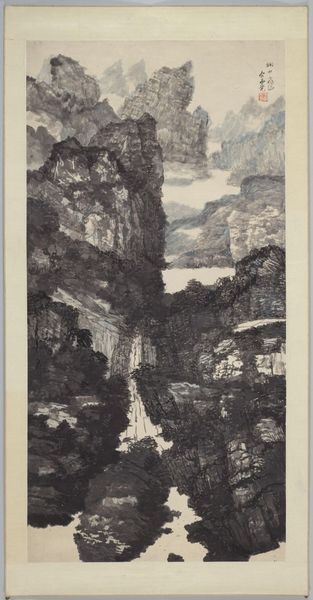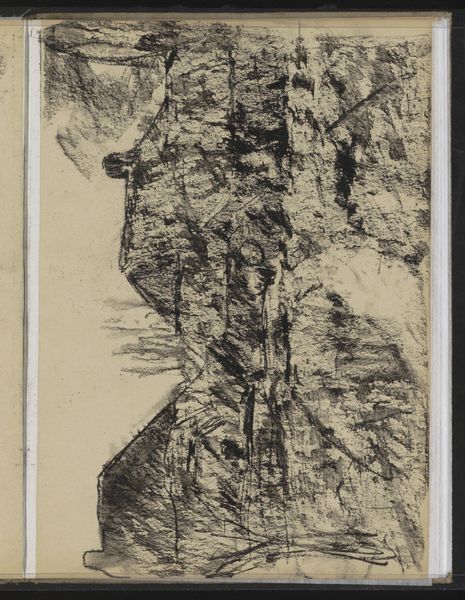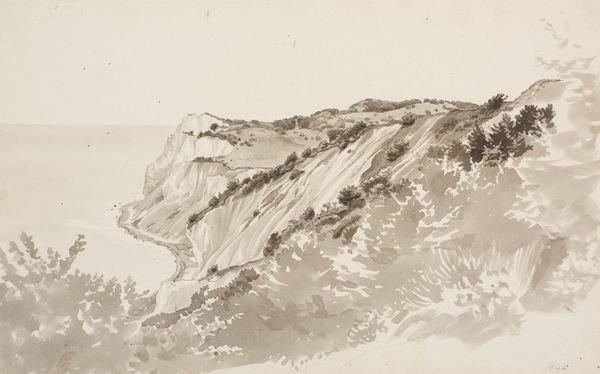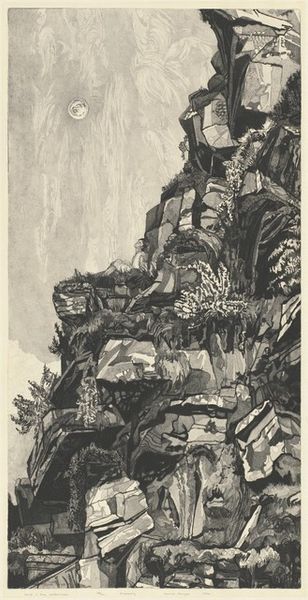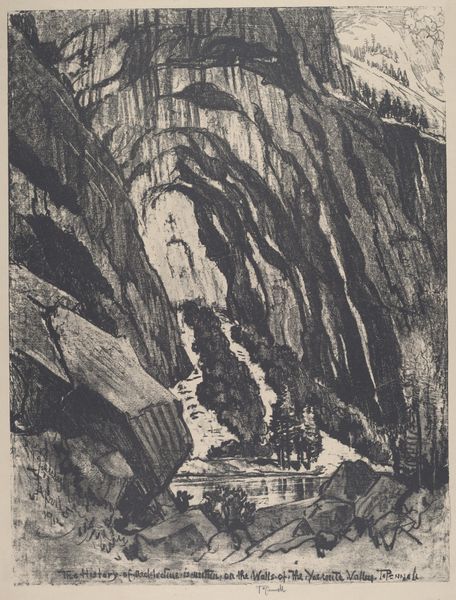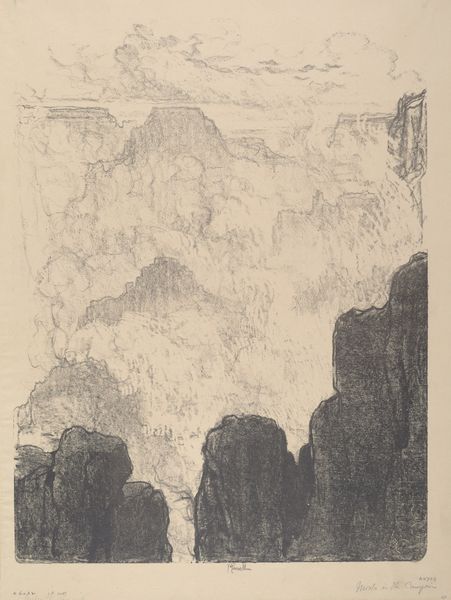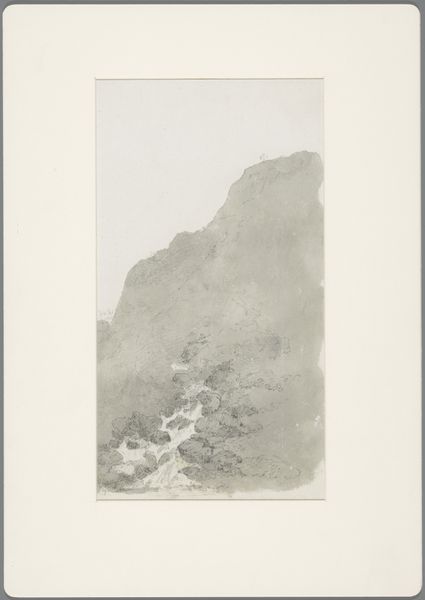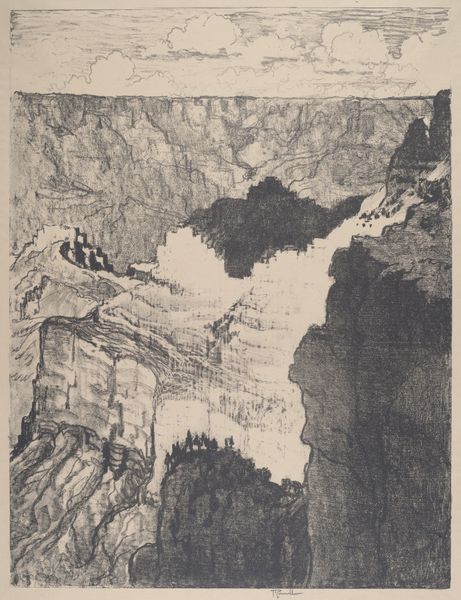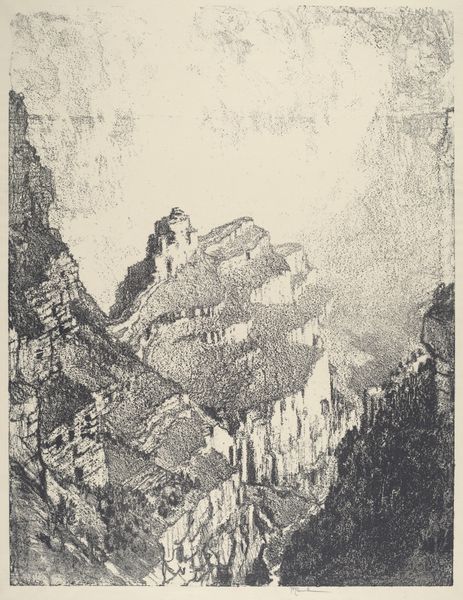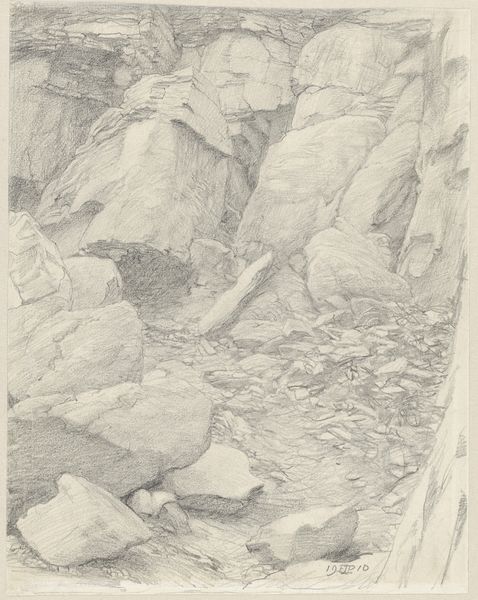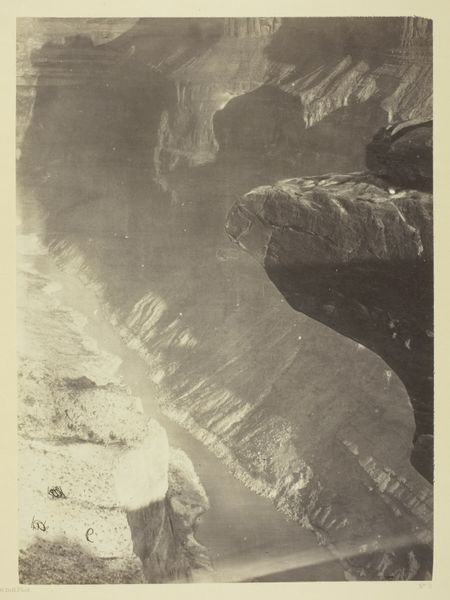
paper, ink
#
asian-art
#
landscape
#
charcoal drawing
#
paper
#
ink
#
abstraction
Dimensions: 44 7/8 x 15 3/8 in. (114.0 x 39.1 cm)
Copyright: Public Domain
Curator: I find myself immediately drawn into the silence emanating from this work, the imposing mountains towering over the figure below… it's almost isolating, isn't it? Editor: Yes, “Meditation in a Cave,” believed to be made by Ren Yu sometime between 1853 and 1901. It’s currently housed here at the Met, a work of ink and color on paper that depicts, quite literally, the subject of its title. We can interpret this artwork through the lens of landscape painting as a political statement and even as an act of social commentary, focusing on the person sitting down and finding solace from this location. Curator: Absolutely. Thinking about solace, there’s this interplay between the individual and the immensity of the landscape. The monk, rendered in a small, bright, bold hue compared to the monochrome environment—the almost abstract treatment of the mountains—it speaks to resilience. But in connection with a world seemingly designed to intimidate... Editor: Indeed. The monochrome is key, directing our attention. It forces us to contemplate the cultural narrative surrounding these reclusive figures who find sanctuary, and often spiritual authority, away from societal pressures and imperial oversight. What does that solitary moment tell us about our relationship to both nature and government? Curator: It questions the status quo. Ren positions the figure in the piece as almost a disruptor to this "normative" mode of conduct: how does he create new philosophical spaces through nature that would lead others to similar states of meditation? To achieve his own radicalization, he seems to have undergone a form of voluntary isolation. Editor: A key component of philosophical art! By highlighting this tension, the artist offers an insight into a figure in a period that faced upheaval, change and unrest. Art, like history, should be contextualized by this discourse, and hopefully promote critical introspection within its viewers. Curator: Looking at how the color creates the emotional response reminds me of how gendered power dynamics operate across a socio-cultural landscape. We must not only meditate within the caves of our art spaces, but also meditate upon their historical influences. Editor: Indeed. It's these intricate layers—social context, intimate feelings, the visual rhetoric, that make experiencing this artwork so deeply meaningful.
Comments
No comments
Be the first to comment and join the conversation on the ultimate creative platform.
